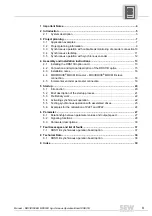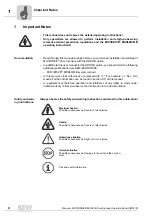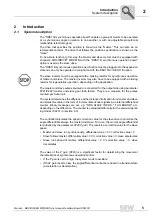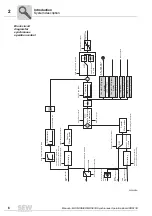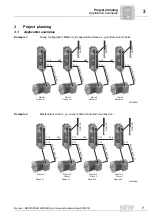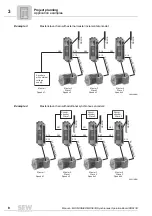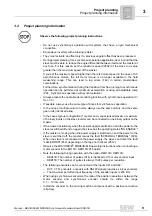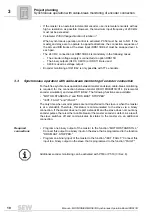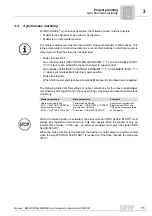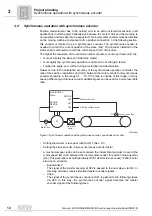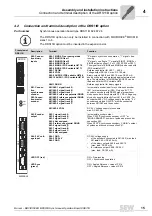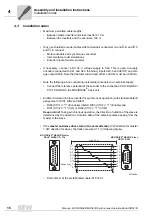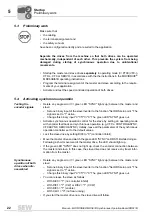
Manual – MOVIDRIVE® MDX61B Synchronous Operation Board DRS11B
9
3
Project planning information
Project planning
3.2
Project planning information
•
Do not use synchronous operation with systems that have a rigid mechanical
connection.
•
Equip slave inverters with a braking resistor.
•
They must activate an offset only if a previous angular offset has been processed.
•
During project planning for a synchronous operation application, bear in mind that the
slave must be able to reduce the angle differential between itself and the master at
any time. For this reason, set the maximum speed (P302) of the slave to a value
greater than the maximum speed of the master.
If you set the maximum speed higher than the rated motor speed in the case of AC
asynchronous motors, the full motor torque is no longer available in the field
weakening range. This can lead to lag errors (F42) in certain master/slave
combinations.
Furthermore, synchronization during the transition from free-running to synchronous
operation can be performed at maximum acceleration or using an adjustable ramp
(P24_ Synchronous operation with synchronization).
•
Always activate the cable-break monitoring function with synchronous operation (
→
Sec. 3.3).
•
If possible, always use the same type of drives for synchronous operation.
•
In the case of multiple column hoists, always use the same motors and the same
gear units (identical ratios).
•
In the case of group configuration (1 master and x equal-ranked slaves), a maximum
of 5 binary inputs on the slave inverter can be connected to one binary output on the
master.
•
If the master is stationary when the power supply is switched on and the power to the
slave is switched off and on again, the slave has the operating status "NO ENABLE."
•
If the master is moving when the power supply is switched on and the power to the
slave is switched off, the master issues the fault "EXTERNAL TERMINAL" (F26).
When the slave is reconnected to the power supply, the slave can detect the fault
"LAG ERROR" (F42) depending on the lag error limit set (P512).
•
Observe the MOVIDRIVE
®
MDX60B/61B operating instructions when connecting a
motor encoder to the EH11B / DER11B:X15 option.
•
Note the following during operation with the option DEH11B / DER11B:
– DEH11B: The number of pulses (X14) is identical to X15 motor encoder input
– DER11B: The number of pulses is always 1024 pulses per revolution
•
The following encoders can be connected at the inputs X41 and X42:
– DC 5 V TTL encoders, encoders with RS422 signal properties, sin/cos encoders
– The maximum permitted input frequency of the encoder inputs is 200 kHz
•
When using synchronous encoders, the ratio of the position resolutions between the
motor encoder and synchronous encoder should lie within the range
0.1 ... 10 incr./mm.
•
Install the encoder on the moving machine component with a positive connection
(slip-free).
Observe the following project planning instructions.



